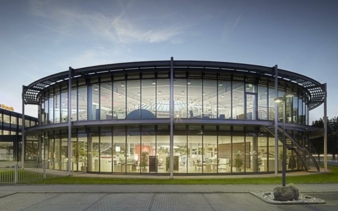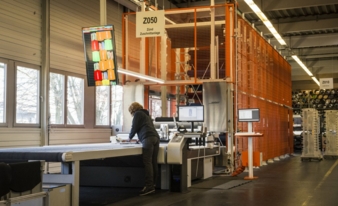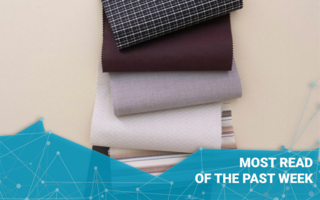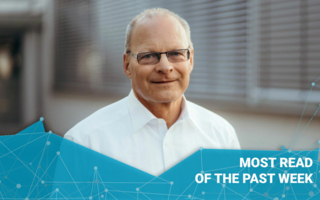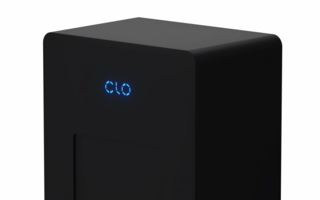21/06/2017 – Zünd — auf Deutsch lesen
Digital into the economic future
The German office furniture manufacturer König+Neurath already invested 2016 in the most modern, digital Zünd cutting technology.
The production at König+Neurath is as individualized as their customers' requirements. The trend towards individually configured products arrived in the furniture industry long ago. As a result, manufacturers are adapting their manufacturing processes to single batch runs. Yet the costs for single unit production are expected to be very close to the price point of serial production. This requires the use of the most modern, digital production tools, combined with a highly efficient production workflow. At the same time, all parts and production data must be transparent and be able to be tracked consistently throughout the entire production process.
A critical step in the production of an office chair is the cutting of fabric. König+Neurath updated this process to the state of the art in spring of 2016 with a new Zünd Cutter G3 L-3200. A roll storage system for material management and feeding that provides space for up to 300 rolls of textiles was procured at the same time.
Specification for optimized fabric utilization surpassed
Prior to their investment, a multi-layer cutter was used for fabric cutting. Due to the necessary manual nesting and other restrictions, the fabric utilization achieved by König+Neurath with the multi-layer cutter was ineffective at best. The goal for the new single-layer cutter was to achieve an optimization of 10 to 15% and thus reduce scrap material. "We have clearly improved our fabric utilization and we still have some headroom," states Thomas Selbach, Head of Production for chairs.
In addition to a significant increase in effectiveness, it was also the stated goal of König+Neurath to automate cutting as much as possible and integrate it into a digital workflow. The system should require only one person to operate. Zünd was even able to meet these specifications. The Zünd cutter and roll storage system are operated by just one person. Because most cuts for office chairs and organizing systems are done on the Zünd cutter, single shift operation has its limits. Selbach elaborates: "This is why we will be introducing overlapping shifts in the near future and using substitute employees during scheduled breaks to ensure that the Zünd Cutter keeps working, even during breaks."
Repeatability and the highest level of quality
In a highly automated production workflow, efficiency is key. That quality must be repeatable and constantly maintained at the highest level is almost a matter of course. How does König+Neurath define quality? "I'll give you an example: we use a mesh material for certain chair models, which is challenging to work with because it is stretchy and does not easily form a vacuum on the table. And the stretching oftentimes differs across individual delivery batches. This means that the cut in a fabric with a larger elongation is correspondingly larger. This surplus fabric leads to wrinkles in the upholstery. Because the operators using the cutter are able to notice the stretching during the first cut, it is easy for them to compensate by regulating the feed accordingly. Basically, the Zünd cutter is much more precise than the multi-layer cutter." The cutting precision is the basis for repeat accuracy, which is essential in a single run production environment. According to Selbach, this wouldn't even be possible with a multilayercutter: "We have switched nearly all of our cutting tasks to the Zünd G3 cutter. The multi-layer cutter is now used only for the simplest of cuts which have no impact with regard to efficiency or waste.
Digital into the economic future
As Selbach sees it, the continued digitalization of production is the only way to financial success in the future: "The benefits of digital cutting are apparent in the visualization interface on the cutter monitor alone. It displays the nested cut parts in a single overview." The cuts are already being created in the engineering department. Order transfers are now completely paperless, which means physical cardboard templates are no longer needed. All relevant parameters such as material stretching or the degrees of hardness of foams are also calculated digitally to precisely determine the material allowance. Modern software determines the order in which jobs are processed. Manual interventions in the job queue are, therefore, no longer necessary. After production, the performance data, such as running and cutting times, daily cuts and speed are stored in the system. This guarantees permanent monitoring of effectiveness. Thanks to the complete digitalization of their cutting operations, König+Neurath can now process single runs and very quickly and efficiently produce sample models or prototype chairs.

